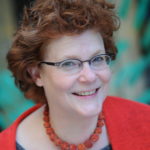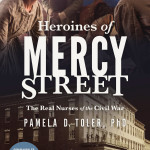
Image of the Cedar Rapids mosque courtesy of Jonathunder – (own work, GFDL 1.2, https://commons.wikimedia.org/w/index.php?curid=49833486)
By Pamela D. Toler (Regular Contributor)
If you listen to the news, you’d think that Islamic immigrants to the United States are something new. They’re not.
Beginning in the 1880s and ending only when the United States closed the door on non-European immigrants in 1924, Muslims from Ottoman-controlled Syria joined the rush to emigrate to America. Like their European counterparts, most of the Syrians who came to America were single young men who intended to work for several years and then go home to find wives. Like their European counterparts, most of them made a home and stayed.
The majority of the Syrian immigrants settled in northeastern cities. A few found their way further west. Cedar Rapids, Iowa, became the unlikely home of a growing Islamic community.
The Syrians who settled in the Midwest worked as peddlers, selling dry goods and notions to farm wives in the days before Montgomery Wards and Sears put their catalogs in every rural mailbox. As soon as they could afford it, they sent for their brothers, and then their wives, to join them. The most successful accumulated enough money to open small stores and to stake a new immigrant to his first peddler’s pack. By the 1920s, Arab-owned shops were common in the upper Midwest. In Cedar Rapids alone there were 50 Arab-owned groceries.
The Islamic community of Cedar Rapids soon grew too large to hold the Friday prayer in individual homes. In 1920, they rented a hall and converted it into a mosque. Like the congregation of every storefront church in America, the Muslims of Cedar Rapids dreamed of the day they would worship in a building designed for the purpose. In 1929, they began to build the second American mosque. (The first was built in Ross, North Dakota, earlier that year. It is no longer standing.) The Depression slowed them down, but didn’t stop them. In the best American tradition of barn-raising, young men from the congregation did much of the work themselves. In 1934, the mosque was complete.
The builders of the mosque may have come from the Middle East, but the new mosque was pure Midwest: a small white clapboard building with a cinder-block foundation. The only thing that distinguished it from a country church or a one-room schoolhouse was the small green dome over the front door. Even the crescent-topped spire looked more like a church steeple than a minaret.
In their own way, the Muslims of Cedar Rapids built a domed mosque in the Ottoman tradition. Every Ottoman mosque provided essential social services to the community it served. In sixteenth century Istanbul, that meant attaching a public bath or a soup kitchen to a mosque; in twentieth century America it meant a basement social hall for weddings, parties, and bingo.
Today there are more than one thousand mosques in America. They range in size and stye from unobtrusive storefront prayer rooms to the Islamic Cultural Center on Embassy Row in Washington, D.C. Most are located in buildings originally designed for another purpose: office buildings, bowling alleys, abandoned stores. Like mosques built in Istanbul, Timbuktu, or Jakarta, those built specifically as mosques are constructed in styles and materials that reflect the local community’s ideas about what a mosque should look like. Some use traditional designs borrowed from Islamic lands. Some re-interpret traditional design with American elements. Others are blazingly modern. The one thing they all have in common–with each other and with every other mosque around that world–is that one wall that directs the faithful towards Mecca.
 Pamela D. Toler is a freelance writer with a PhD in history and a large bump of curiosity. She is the author of Heroines of Mercy Street: The Real Nurses of the Civil War and is currently working on a global history of women warriors, with the imaginative working title of Women Warriors.
Pamela D. Toler is a freelance writer with a PhD in history and a large bump of curiosity. She is the author of Heroines of Mercy Street: The Real Nurses of the Civil War and is currently working on a global history of women warriors, with the imaginative working title of Women Warriors.
Find Pamela on Twitter at @pdtoler
Read more of her writing on her personal blog
Save


